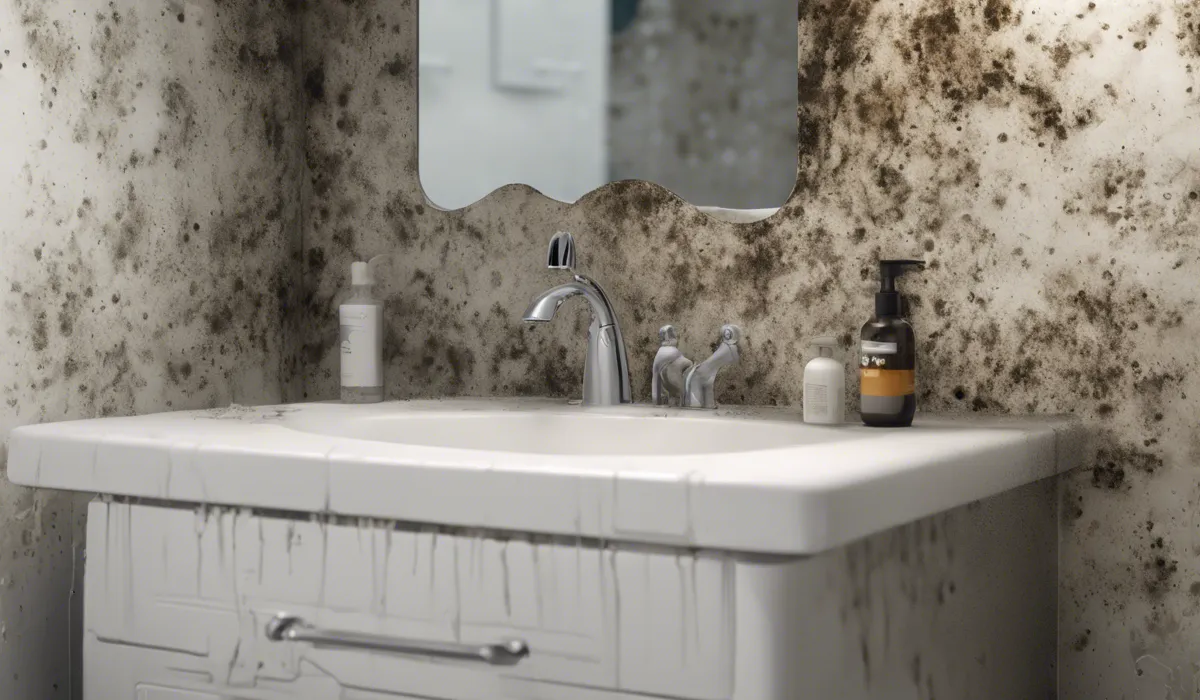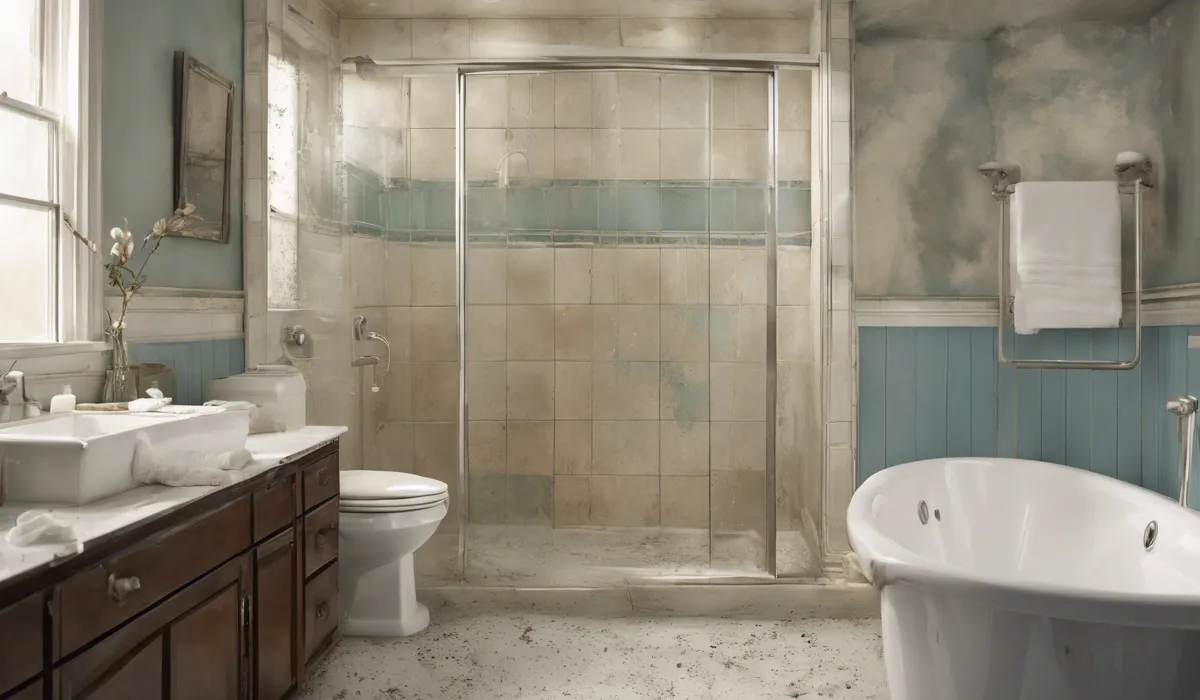Mold in bathrooms often appears as black, green, or gray spots or patches. It typically thrives in damp areas like shower corners, ceilings, and around sinks or toilets. Mold can have a fuzzy or slimy texture and musty odor.
Identification of Bathroom Mold

Common Mold Characteristics
Bathroom mold is often easy to spot. It usually shows up as black, green, or gray spots that can spread across bathroom surfaces. The texture of mold can vary: it may look fuzzy on a shower curtain or slimy on tiles.
Mold grows by releasing spores into the air, which land on damp surfaces and begin to multiply. It loves warm, moist environments and can grow rapidly if not addressed.
Typical Mold Locations in the Bathroom
Mold in the bathroom can appear in several places. You might find it in the shower or bathtub, clinging to the grout or caulking.
Sinks and toilets can also harbor mold, especially around the base where moisture accumulates.
Walls and ceilings are also prone to mold growth, particularly if they’re not well-ventilated and stay damp after you take a hot shower.
Mold vs. Mildew Appearance
It’s important to know the difference between mold and mildew. Mildew is usually white or gray and powdery. It’s more surface-level and easier to clean.
Mold, on the other hand, can penetrate deeper into surfaces and is typically darker and harder to remove.
Visual Stages of Mold Growth
Early-stage mold might look like small specks. As it grows, it can spread into larger patches that take over entire walls or ceilings.
Over time, mold can even darken and become more pronounced, indicating a more significant issue.
Health Implications of Bathroom Mold

Potential Health Risks from Bathroom Mold
Exposure to bathroom mold can lead to various health problems. Breathing in mold spores may cause allergic reactions or respiratory issues.
For those with asthma, mold can trigger attacks and worsen symptoms. Long-term exposure may even lead to more serious conditions.
Symptoms of Mold-Related Health Issues
If you’re exposed to mold, you might experience sneezing, coughing, or itchy eyes. Some people may develop skin rashes or feel constantly tired.
If you notice these symptoms and they don’t go away, you might have mold in your home.
Vulnerable Populations to Mold Exposure
Some people are more at risk when it comes to mold. Babies, elderly people, and those with weakened immune systems can suffer more severe reactions.
If you have chronic lung disease or are undergoing cancer treatment, it’s especially important to live in a mold-free environment.
Address Mold Growth Promptly
For the sake of your health, it’s crucial to tackle mold as soon as you spot it. If left unchecked, mold can not only damage your home but also continue to pose health threats.
Regular inspections and quick action can keep your bathroom safe and healthy.
Prevention and Removal Strategies

Minimizing Mold with Daily Habits
Preventing mold starts with your everyday routine. Keep your bathroom well-ventilated by using an exhaust fan or opening a window.
Wipe down wet surfaces after you shower and fix any leaks as soon as possible. These simple habits can make a big difference in keeping mold at bay.
Cleaning Solutions for Mold Removal
For small mold issues, you can use natural solutions like vinegar or baking soda to clean affected areas.
For tougher mold, you might need a chemical cleaner designed for mold removal. Always wear gloves and a mask, and make sure the room is well-ventilated when you’re cleaning.
Professional Mold Remediation Services
If you have a large mold problem, it’s best to call in the professionals. Mold remediation services have the tools and expertise to safely remove mold and prevent it from coming back.
They’ll also help you understand what caused the mold, so you can take steps to avoid it in the future.
Long-Term Mold Prevention
Investing in anti-mold paint for your bathroom walls and ceilings can be a smart move. Running a dehumidifier can also keep humidity levels low.
Regularly check for plumbing leaks and address them quickly. These long-term strategies can help keep your bathroom mold-free.
FAQs About Mold in Bathrooms
What does mold typically look like in bathrooms?
Mold in bathrooms often appears as black, green, or gray spots or patches, especially in damp areas like shower corners, ceilings, and around sinks or toilets.
Where is mold most commonly found in bathrooms?
Mold is commonly found in shower corners, on ceilings, around sinks, and near toilets—areas that tend to stay damp.
What texture does bathroom mold have?
Bathroom mold can have a fuzzy or slimy texture, depending on the type and severity of the growth.
What color is bathroom mold?
Bathroom mold can vary in color, typically appearing as black, green, or gray.
Does bathroom mold have a distinctive smell?
Yes, bathroom mold often has a musty odor, which is a clear indicator of its presence even when it’s not immediately visible.
Final Thoughts
Mold in bathrooms manifests as black, green, or gray spots, often in damp locations like shower corners and around plumbing fixtures.
It can present a fuzzy or slimy appearance and emit a musty smell, signifying its presence and the need for removal to maintain a healthy environment.
